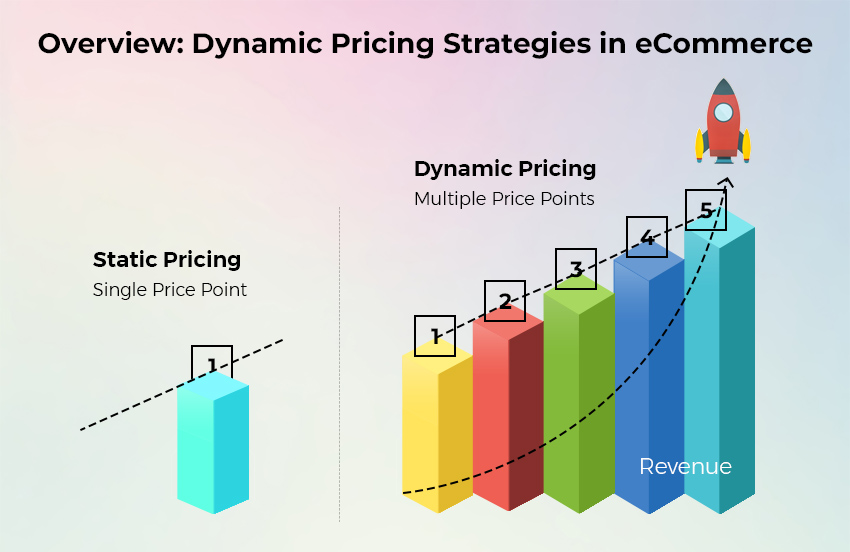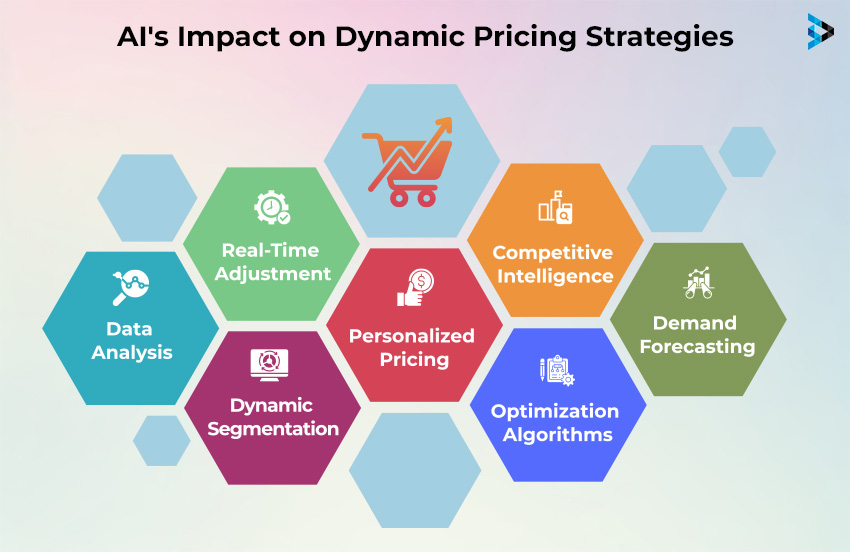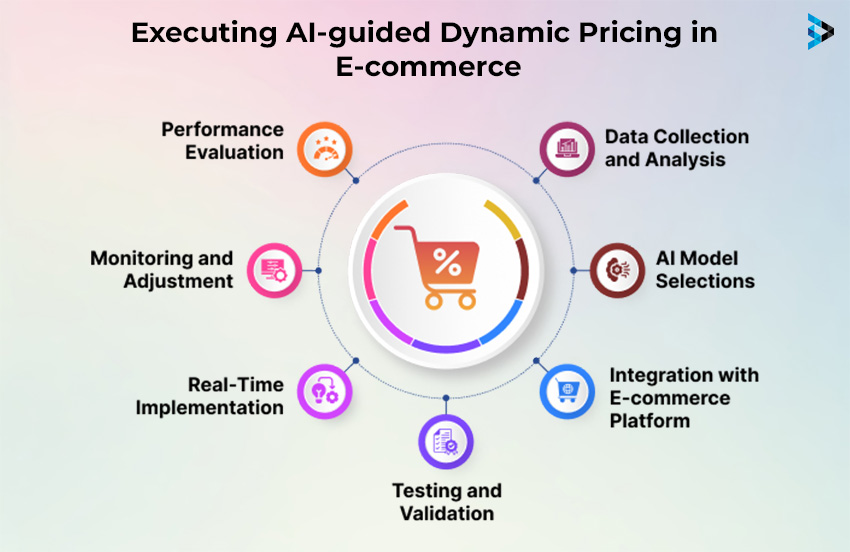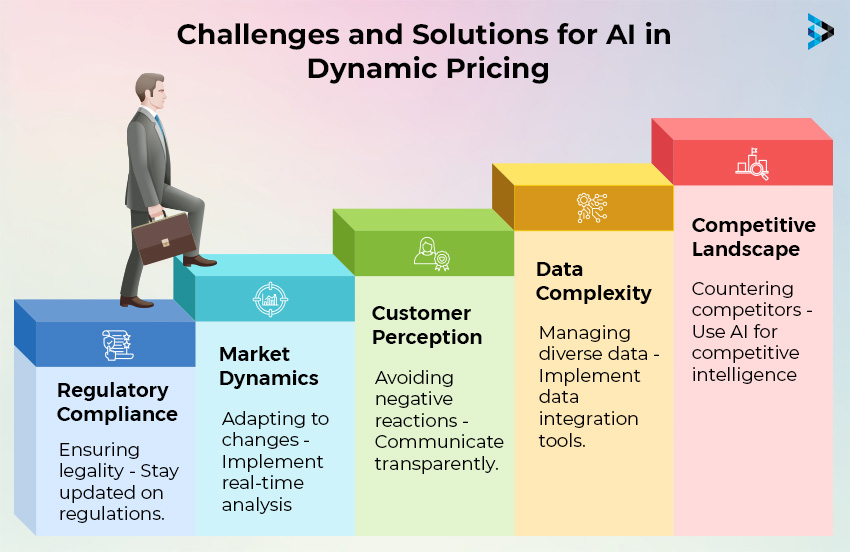Booking an Uber ride on a day when it's pouring can be much more expensive than any other clear weekday.
This is the same reason airfares, movie tickets, and hotel accommodations are priced higher during in-demand seasons.
For centuries, pricing has been determined by evaluating demand and supply. This dynamic pricing strategy benefits businesses by attracting higher profits and customers who can immediately avail themselves of the products and services.
Dynamic pricing applies more to digital businesses than brick-and-mortar stores. As prices are easier to change, businesses, like those in the eCommerce industry, can use dynamic pricing to earn from opportunities.
By incentivizing purchases during slower periods, businesses can experience a more efficient allocation of resources. However, it's important to implement dynamic pricing strategies transparently to win customers' confidence. Ultimately, striking a balance between maximizing profits and customer satisfaction is key.
Understanding Dynamic Pricing in eCommerce
A dynamic pricing strategy adjusts product prices based on factors influencing customers' buying decisions. Consider a limited collection of shoes that created a buzz before its launch. Etailers can fulfill the demand for top-shoe fans by charging them a higher fee at the promised time. Customers are willing to pay more if they get access to their desired merchandise ahead of others.

Dynamic pricing is the fee customers are willing to pay when they know they can be among the first to try, use, or purchase desired products. Unlike traditional static pricing, dynamic prices can change multiple times. When catering to a diverse audience, dynamic pricing can leverage AI ML Development to identify shifts in demand through customer data and sales trends.
Although dynamic pricing may seem focused on higher-paying customers, it is a strategy that appeals to all target groups. For instance, if a specific style gains popularity, dynamic pricing can adjust the price upwards to capitalize on the increased demand.
This allows the retailer to capture the higher customer willingness to pay for a trendy product while still offering it to budget-conscious customers at a later date or through targeted discounts.
The balance between earning higher margins during high-demand times to sustainably offering higher value to loyal customers who are sticking around for a longer period.
Dynamic pricing allows businesses to retain their brand value while maximizing revenue. Real-time changes in demand and supply help you stay agile and protect you during business slowdowns.
The Role of AI in Dynamic Pricing
Dynamic pricing requires in-depth data analysis of trends, buyers' willingness to purchase at higher prices, and the standard market rate. Your eCommerce store can set the perfect pricing strategy with the right tools and an efficient team. With the power of artificial intelligence, you can amplify your capabilities to find the proper dynamic pricing. Here's what makes AI development a top choice for dynamic pricing in eCommerce:
- Find patterns in data: AI algorithms can analyze vast data sets, including historical sales figures, customer behavior patterns, market trends, and even social media sentiment. This allows them to identify subtle patterns and accurately predict future demand fluctuations.
- Optimal pricing prediction: AI can take your revenue perspective to determine the right prices based on anticipated demand and market conditions. AI can go beyond reacting to current trends. Machine learning models can forecast future demand, enabling businesses to proactively set optimal prices for upcoming seasons, events, or product launches.
- Personalized pricing strategies: AI can analyze customer demographics, purchase history, and browsing behavior to categorize customers into distinct segments. You can offer targeted discounts to high-value customers or adjust prices based on a customer's perceived willingness to pay.
Components of AI-Led Dynamic Pricing
Working with high-quality data—input data about products, markets, trends, customer data sources, customer behavior, customer pricing, and others—can yield the best results from AI-led pricing strategies.
Extensive data helps create deep data structures and relationships between different entities. The better the data, the better the outcomes for AI-trained models. Since data collection is continuous, you want the right process to capture data from sources. Extensive and strategic data gathering allows extraction from structured and unstructured data.

- Data Collection and Analysis: Data undergoes deep analysis and processing after collection. AI can help you collect data from social media to understand the sentiment regarding the product and anticipation about future releases.
- Demand Forecasting: By analyzing patterns and identifying trends, AI-driven demand forecasting provides accurate predictions that help eCommerce businesses optimize inventory levels, reduce stockouts, and minimize overstocking. The true use of AI is to share a bit of the future to support decision-making for dynamic pricing. With demand forecasting, you can stay alert about factors influencing the price and take action sooner to your advantage.
- Price Optimization: AI helps determine the optimal price point for your eCommerce business. With price optimization, you gain better insights into how price affects different customer segments, so you can set a price right for you and your customers.
- Competitor Analysis: By identifying mentions of your competitors across channels for different products, you determine the factors that may give the competition the edge. Suggestions of different price bands can bring your business on a par with the industry or even surpass them.
Implementing AI-led Dynamic Pricing in E-commerce
Ensuring synchronization between your e-commerce platform and AI-trained model is paramount. You may have to involve developers to conduct data migration, API connections, and configuration adjustments to ensure the AI system can access and analyze your sales data, inventory levels, and customer behavior.

Step 1 | AI Model Training
An AI model needs training to understand your business, price points, customer behavior, and other factors influencing purchasing decisions.
Provide the model with historical data sets on sales, pricing strategies, customer demographics, and market trends. With the quality data you input, AI will improve its understanding of your business and prediction of future demand.
Step 2 | Continuous Evaluation & Refinement
Dynamic pricing is a continuous process that requires evaluation for accuracy and usability. Once your AI model is in working condition, monitor its performance closely. Analyze whether the suggested pricing strategies align with your business goals and customers' expectations.
Refine your approach and adjust the AI model based on real-world results. A/B testing is a must to apply different pricing strategies for evaluating pricing reactions.
Step 3 | Human Expertise in the Loop:
While AI plays a powerful role in helping businesses serve humans better, human oversight is vital for several reasons. First, understanding customer psychology and industry nuances can help guide the AI model's training and refine its pricing suggestions.
Manual input is crucial for setting business goals and pricing constraints and ensuring compliance with marketing and pricing regulations.
Challenges and Solutions Adopting AI for Dynamic Pricing
With AI comes the question of data integrity and accuracy. AI models become more intelligent as progressively rich data sets are provided. Careful moderation is needed to ensure the data modeling is unbiased and presents fair results to the business and every customer segment. Here are some of the foremost challenges facing e-commerce businesses that are adopting AI for dynamic pricing.

- Customer Perception
Communicate how dynamic pricing works. We feel better when Uber tells us that the surge price is due to increased demand, don't we?
Consumers might perceive dynamic pricing as unfair or manipulative if it doesn't consider competition, industry, and the customer's intent to spend. Transparency is key to addressing this.
Explain its benefits for the customer (potentially more comprehensive product selection through efficient inventory management) and the business (increased efficiency and profitability). This fosters trust and understanding, mitigating negative perceptions.
- Data and Training Quality
The quality of data heavily influences AI models' outcomes. Inaccurate or insufficient data can lead to flawed pricing suggestions. Ensure a robust data collection system is in place, prioritizing data quality throughout the process.
Cleanse and update your data sets regularly to maintain accuracy. This meticulous approach ensures that the AI model receives the best information to make informed pricing decisions.
- Fairness and Ethical Concerns
Dynamic pricing based solely on a customer's perceived willingness to pay can raise ethical concerns. Implement safeguards to prevent discriminatory pricing practices. Consider customer segments beyond just purchase history.
Prioritize fair pricing across demographics, ensuring everyone receives a reasonable price based on product cost and market demand. This responsible approach mitigates ethical concerns, and fosters trust with your customer base.
Businesses that applied dynamic strategies
Amazon, one of the largest eCommerce platforms with over a billion products, has implemented dynamic pricing strategies several times. It's reported that Amazon has even changed its prices 2.5 million times daily to set prices lower than those of its competitors.
Smaller stores can also benefit from dynamic pricing. E-Bikeshop, a UK bike retailer, offers competitive prices against rivals like Electric Rider and Electric Bike World.
Takeaway
AI-powered dynamic pricing can transform your e-commerce businesses. Leverage AI to adjust prices based on competitor actions, product availability, and real-time demand. AI developers can help build an AI model that monitors prices in real-time and adjusts prices to attract the relevant target audience. Going beyond revenue generation, dynamic pricing helps improve customer satisfaction.
Armed with a tool to navigate competition, dynamic pricing can be your influencer to boost your business. It allows you to react swiftly to competitor actions, ensuring you remain competitive in a dynamic online market.
You can adjust prices to capture market share and win over new customers. AI-powered dynamic pricing will improve with advanced data mining and analytics techniques for faster and more accurate pricing.
Read more: AI in Payment Solutions: Transforming the Future of Transactions
Related Articles
Success Stories
Transforming Maintenance Management: Brainvire’s Success Story of Seamlessly Integrating Ecommerce with Odoo



